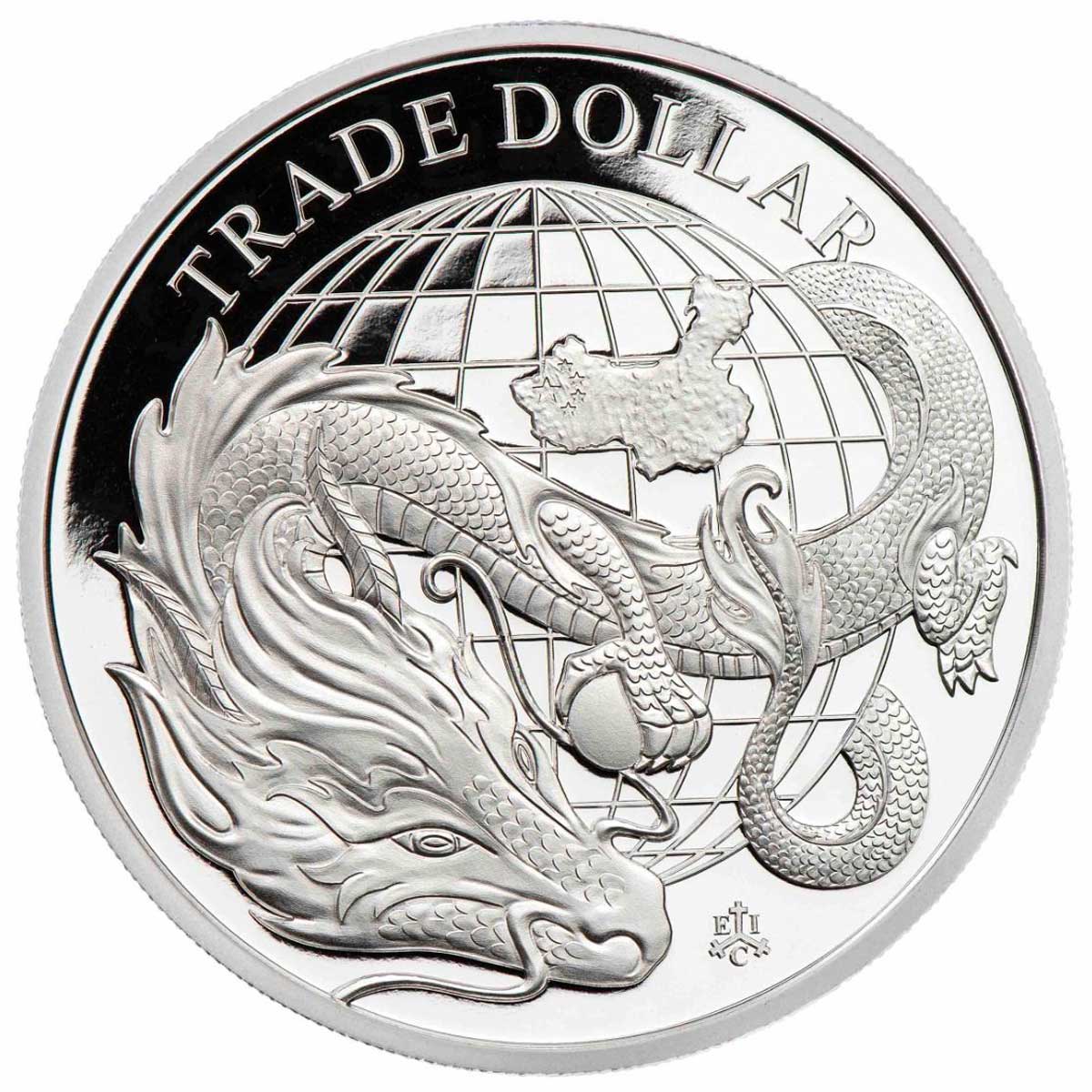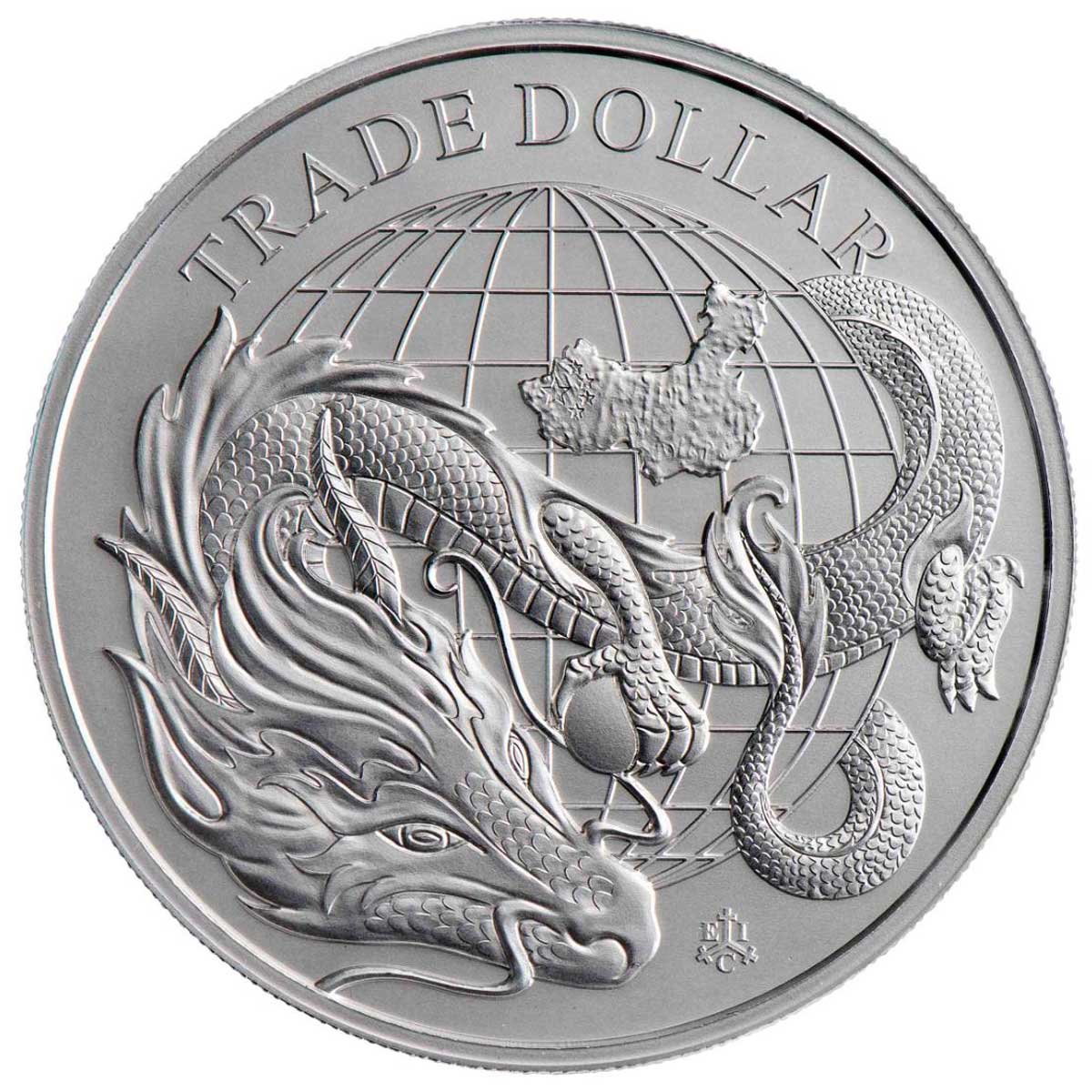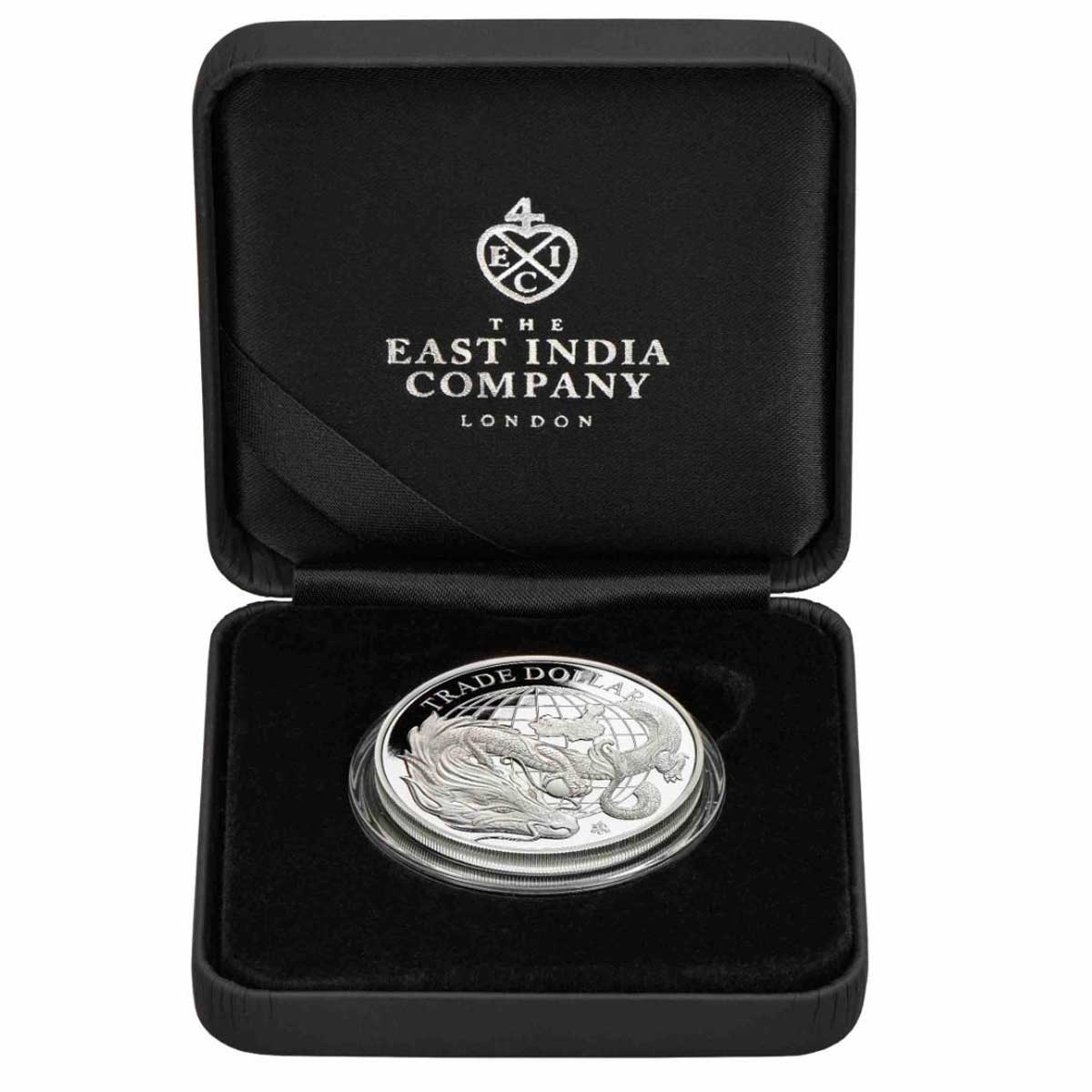The Chinese Trade Dollar returns in a new series of bullion and proof coins from the East India Company
Just finishing up a multi-year run, LPM’s ‘Dragon Dollar Restrike’ series of bullion rounds was a range of reproductions of the famous Trade Dollars of Asia. Each was issued with custom designs for regions in China, and the common motif of them all was the Chinese Dragon. Originals are extremely rare today, so it was pretty cool to be able to pick up such well produced reproductions.
The East India Company is now launching a new series not reproducing the original Trade Dollars, but reimagining them as if they were launching today. First to drop is the Dragon Dollar, sporting a modern incarnation of that ancient beast of lore. It’s a fine looking design, with the Chinese-style dragon, holding the pearl of legend, overlaid on a sphere representing the globe, complete with an image of China.
Issued for St. Helena, the Jody Clark effigy of Queen Elizabeth II fills the obverse. Three versions of this design make up the range. There are one ounce proof gold and silver coins, which will no doubt show the design off the best, as well as a similarly sized silver bullion coin with a mintage of just 5,000 pieces. The bullion version is exclusive to LPM and all are available to order now.
MINTS DESCRIPTION
Trade Dollars were first introduced in the late 15th Century when the ‘Spanish Dollar’ was used to facilitate trade. It went on to inspire the creation of numerous national currencies, including the US Dollar.
By the late 19th Century, Chinese trade was growing both regionally and with the West. At the same time reforms within Chinese life were underway, many of them led by a strong female figure who herself played a key role in the story of the Chinese Trade Dollar. Shortly after the death of Emperor Xian Feng in 1861, his concubine Cixi assumed control and ruled China as The Empress Dowager. Cixi was able to read, a rare skill at that time, and educated herself on domestic and foreign affairs, creating policies that would modernise China’s culture and economy. Recognising the importance of making international trade as easy as possible she instigated changes in customs, weights and measures which paved the way for the creation ofthe Dragon Trade Dollar.
The first Chinese Trade Dollars were produced in 1889 in a purpose-built Mint in Guangdong Province. The coins were machine-struck using equipment bought from the United Kingdom to a precise specification, based on traditional Chinese weight measurements; seven Mace and two Candareens. One Candareen was 1/10th of one Mace; combined, each Dragon Trade Dollar was equivalent to 27.22 grams. The coin’s design featured a traditional Chinese dragon, leading to them being popularly known as the ‘Dragon’ Dollar. The last coins were struck in 1911.
| SPECIFICATION | |||
| DENOMINATION | £1 GBP (St. Helena) | £1 GBP (St. Helena) | £5 GBP (St. Helena) |
| COMPOSITION | 0.999 silver | 0.999 silver | 0.9999 gold |
| WEIGHT | 31.1 grams | 31.1 grams | 31.1 grams |
| DIMENSIONS | 38.6 mm | 38.6 mm | 32.0 mm |
| FINISH | B / Unc | Proof | Proof |
| MODIFICATIONS | None | None | None |
| MINTAGE | 5,000 | 1,000 | 100 |
| BOX / C.O.A. | No / No | Yes / Yes | Yes / Yes |







Leave A Comment